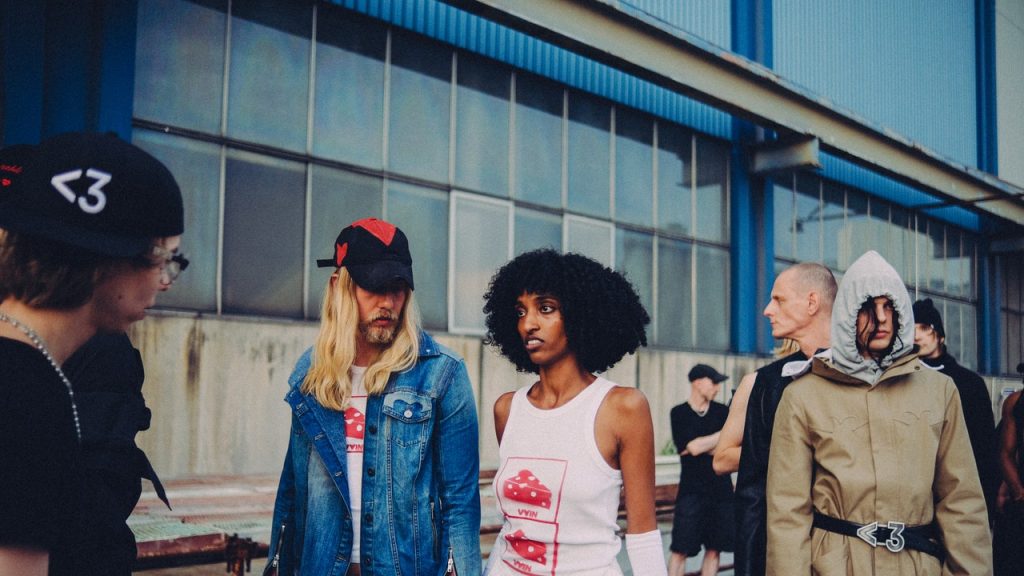The Helsinki Fashion Week is shifting its focus to highlight creativity and the processes behind designers’ creations while also incorporating fun elements into the event. For instance, Ervin Latimer’s alter ego, Anna Conda, hosted a drag bingo night for international guests, bringing a unique and entertaining twist to the fashion week. Latimer’s brand, Latimmier, explores the performance of masculinity through clothing, and the drag performance directly ties back to the brand’s roots and approach to gender.
In addition to creativity, sustainability is a key priority for many young brands in Helsinki. Vain, for example, uses deadstock to produce its goth-infused designs, reflecting the brand’s commitment to environmental consciousness. Sofia Ilmonen, winner of the Hyères Sustainability Award in 2021, has partnered with Spinnova to create modular designs using textiles made from sustainably sourced wood pulp and waste. This innovative approach allows for easy modification of garments and aims to extend their lifespan.
Moreover, Helsinki Fashion Week places a strong emphasis on promoting craftsmanship and supporting local production. Ekroth’s knitwear, for instance, is made in Finland, and the brand offers customers the opportunity to purchase DIY kits to knit one of the brand’s autumn-winter 2024 designs. By involving the knitting community in the production process, Ekroth aims to engage customers in a supportive and collaborative manner, showcasing the importance of community and craftsmanship in the fashion industry.
The fusion of creativity, sustainability, and craftsmanship at the Helsinki Fashion Week exemplifies a holistic approach to fashion that goes beyond aesthetics and commercial success. By focusing on diverse perspectives, such as Latimer’s exploration of gender performance and Vain’s dedication to using deadstock materials, designers in Helsinki are pushing boundaries and challenging traditional norms in the industry. This commitment to innovation and sustainability reflects a growing awareness of environmental and social issues within the fashion world.
The collaborative efforts between designers and sustainable textile producers like Spinnova further highlight the fashion industry’s potential to drive positive change and contribute to a more environmentally conscious future. By utilizing sustainable materials and production techniques, designers like Ilmonen are paving the way for a more circular and responsible approach to fashion design. This innovative mindset not only benefits the planet but also encourages a shift towards more ethical and mindful consumption practices among consumers.
Overall, the Helsinki Fashion Week serves as a platform for emerging designers to showcase their talents, experiment with new ideas, and engage in meaningful dialogue around important issues such as sustainability, craftsmanship, and gender performance. Through events like drag bingo nights and collaborations with sustainable textile producers, the fashion week embodies a spirit of creativity, inclusivity, and innovation, setting a positive example for the industry as a whole. As the fashion world continues to evolve, Helsinki Fashion Week demonstrates the potential for fashion to be a catalyst for positive change and a force for good in the world.













